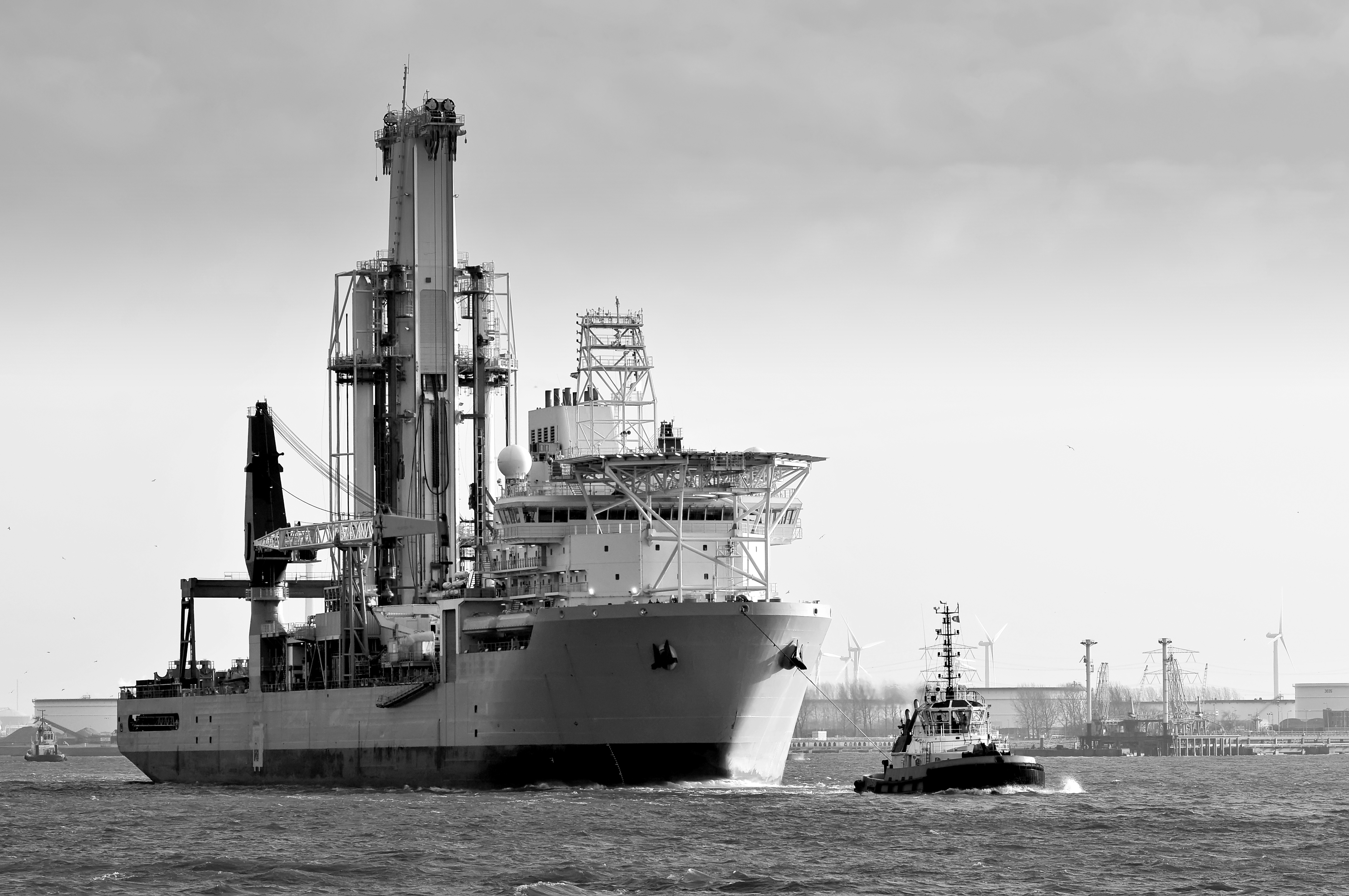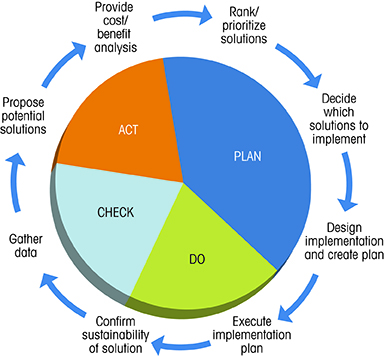
There was a realization across the industry of the urgent need to improve performance and production efficiencies even before the recent decline in oil prices. Maximizing revenues is crucial to the survival of any business and, with many assets struggling to produce at breakeven costs, optimizing production can make the difference between survival and going out of business.
For many years the industry has invested in a host of improvement initiatives, and yet its conversations reveal a general disappointment with what many of these initiatives deliver. In many cases, short-term benefits were realized, sometimes with impressive results. But, invariably, even in the more successful cases, these benefits have faded over time. There also has been a lot of effort in introducing operational excellence and continuous improvement principles in general to improve production optimization.
Production optimization tends to be delivered through advances in technology, process and skills. In all its various forms, technology plays an important role across the asset delivery value chain, from subsurface and wells management to topsides facilities. Processes, and in particular management processes, facilitate data gathering and decision-making to ensure optimization efforts are focused appropriately, while knowledge and skills are required to operate and manage technology and processes effectively.
In Hitachi’s experience of the industry, the company has not found differences in the availability of these factors to be materially significant. Most operators possess the technology, management processes and skills with the potential to deliver more value. The key word is “potential.” What is required to unlock this potential is an organizational culture that encourages and focuses on sustained effort to drive improvements to production efficiency. It’s not what you have but how well you apply it.
Organizations that have succeeded in developing a culture of continuous optimization have done so with a great deal of effort and a relentless focus on driving change. As urgent as the need for production optimization is in most organizations, what is perceived as “resistance to change” often occurs. This response is typical from a workforce that often wants nothing more than the ability to go about their jobs.
A major challenge of promoting a “culture of production optimization” is to remove the perception of change being an unknown quantity and something to fear. Continuous improvement and production optimization should be seen as positive forces for the good of the organization and all who work within it.
Not just about increasing uptime
The word “optimization” suggests there is more to consider than merely getting the most production from the asset. Working to optimize production also means paying attention to other operational factors that represent value to the business. These include safety and environmental assurance as well as minimizing capital and operating costs.
Optimization implies managing trade-offs. A holistic approach to all potential improvement solutions is required to ensure that an organization is not only ranking initiatives, whether related to production or cost reductions, but is balancing all potential solutions for the overall good of the business.
Collaboration between the different functions replaces what might otherwise appear as silo behavior.
Production optimization efforts are most effective when the whole value stream is reviewed and managed holistically, with involvement and constructive challenge from across the organization. Collaboration between the different functions replaces what might otherwise appear as silo behavior. Managing the entire value chain as a complete system when evaluating options will ensure that the appropriate balance of resources and funding are allocated to the proposed production optimization solutions.
Too focused on technology solutions?
Old and new technologies exist across the value chain to help deliver improvements in production efficiency. Examples of innovative technologies introduced to the oil and gas industry in recent years include time reservoir monitoring and surveillance; sound well flow rate and composition measurement; distributed control systems (DCS) communicating directly with computerized maintenance management systems (CMMS); and Big Data analytics that help to inform changes in commercial strategy, taking into account global market conditions.
As impressive as these technology advances are, functional leaders tend to focus on those innovations closest to their own areas of knowledge and expertise. For example, geophysicists might tend toward seeing reservoir surveillance as the main area on which to focus investment; well integrity engineers, ultrasound sand monitors; plant managers, DCS/CMMS integration; commercial managers, Big Data/analytics; and so on.
Clients implementing technology solutions often face challenges related more to cultural and organizational issues than the technology itself. It is not unusual to hear of clients who have invested in technology to address particular issues in their assets and then struggle to implement this technology to its full potential.

Importance of a clearly communicated vision
For production optimization to be truly effective, management needs to foster a shared vision and spirit of collaboration. The vision needs to represent something that people working in all areas of the business can relate to and identify with. They need to be able to discern a common purpose that is specific enough to be meaningful but also something to which everyone in the business can align their day-to-day tasks and fully commit to.
In any industry it is essential that all employees can deduce and articulate a line of sight between their dayto- day tasks and the company’s overriding vision, strategy and objectives. When this is the case, managers have confidence that new production optimization initiatives raised by anyone in the organization will be aligned with the desired outcomes and unanimously embraced.
What does a continuous optimization process look like?
Continuous improvement efforts usually follow a “plan, do, check, act” (PDCA) approach (see diagram). There is an iterative effect of repeating the cycle that results in a move toward the optimum output of a process or the quality of a product. Change programs typically use a linear-based project method such as the following steps:
• Gather data;
• Propose potential solutions;
• Provide cost/benefit analysis;
• Rank and prioritize solutions;
• Decide which solutions to implement;
• Design implementation and create plan;
• Execute implementation plan; and
• Confirm sustainability of the solution.
This is a sound approach for managing large-scale capital projects, but if a company wants to develop a culture of optimization in an organization, the process needs to be thought of in more cyclical terms.
The linear approach described above can be overlaid on the PDCA cycle. Note that in a continuous optimization cycle, planning is still a relatively large factor. Also, it is extremely important that implementation is not considered to be fully complete until sustainability is assured and the solution is perceived as business as usual.

How to foster a culture of continuous optimization
The importance of a clear and well communicated vision already has been discussed as a key element of any strategy that requires the commitment and engagement of not only leaders and managers but of the wider workforce too.
It also is important for leadership to provide reassurance to employees and managers that continuous change is not something to be feared. The word “fear” in this context might sound like an exaggeration, but it is a normal human response to circumstances that change or are forced upon us seemingly outside of our control.
Rather than getting into a confrontational situation, it is more effective to address the underlying causes of fear of change among the workforce.
Industry executives and business leaders understand that change is necessary when faced with implementing it across their wider organizations. The barrier of resistance often is seen as needing to be defeated or broken down. Rather than getting into a confrontational situation, it is more effective to address the underlying causes of fear of change among the workforce. This can be done by providing a sense of control or involvement at different stages of change.
There are three main concepts to consider when addressing fear of constant change. First, ensure that existing systems and processes are stable and that previous optimization improvement initiatives are fully embedded or at least require minimal effort to sustain than other established and stable systems and processes.
Second, actively engage the wider workforce in the design and implementation of new systems and processes by selecting key members of the workforce to work on the design and implementation of optimization efforts. The vision and communication strategy will have a more pronounced effect on obtaining buy-in than merely informing them of the compelling case for change and hoping for intrinsic motivation to deliver.
Third, stabilize new systems and processes within the organizations by making them integral to the day-to-day workings of the organization. Resources and efforts to complete this step should not be underestimated, and sustainability activities should be integral to the final steps of an implementation plan.
Governance
While maintaining the enthusiasm and creativity required to support a culture of production optimization, it is important to introduce mechanisms that ensure all solutions are aligned to the business objectives.
In Hitachi’s experience, alignment and coordination are best provided through a project management office (PMO) or other initiative/change management function that maintains oversight across all major change and optimization initiatives within an organization.
Key roles within such a function should include identifying points of synergy as well as conflict and also making sure that projects are well scoped and designed to fit in with the organization’s optimization objectives. It is also important that the PMO function has responsibility for evaluating project results to ensure that the expected return on investment was achieved and for capturing and sharing learnings that can be used to improve the next round of improvement projects.
Change needs to be seen as a constant within a culture of production optimization, but in a way that does not make employees or management feel unsettled.
Constant change
Change needs to be seen as a constant within a culture of production optimization, but in a way that does not make employees or management feel unsettled. There needs to be steadfast commitment by leadership to stay the course when driving continuous change as well as a clear sense of discipline in ensuring that improvements are fully embedded and sustainable before declaring implementation complete.
It is also important to engage the wider workforce in helping deliver the vision and objectives of leadership. This will help alleviate any resistance to change and will actually help motivate the workforce to initiate further optimization opportunities.
Recommended Reading
Chevron’s Tengiz Oil Field Operations Start Up in Kazakhstan
2024-04-25 - The final phase of Chevron’s project will produce about 260,000 bbl/d.
Rhino Taps Halliburton for Namibia Well Work
2024-04-24 - Halliburton’s deepwater integrated multi-well construction contract for a block in the Orange Basin starts later this year.
Halliburton’s Low-key M&A Strategy Remains Unchanged
2024-04-23 - Halliburton CEO Jeff Miller says expected organic growth generates more shareholder value than following consolidation trends, such as chief rival SLB’s plans to buy ChampionX.
Deepwater Roundup 2024: Americas
2024-04-23 - The final part of Hart Energy E&P’s Deepwater Roundup focuses on projects coming online in the Americas from 2023 until the end of the decade.
Ohio Utica’s Ascent Resources Credit Rep Rises on Production, Cash Flow
2024-04-23 - Ascent Resources received a positive outlook from Fitch Ratings as the company has grown into Ohio’s No. 1 gas and No. 2 Utica oil producer, according to state data.





